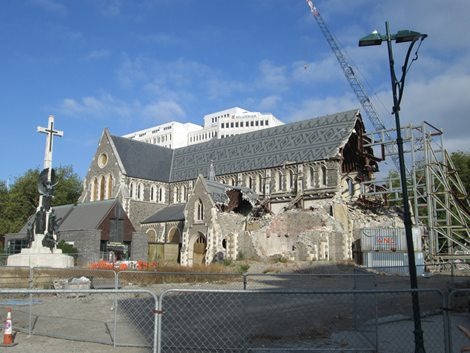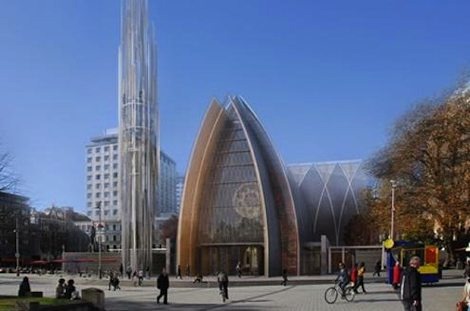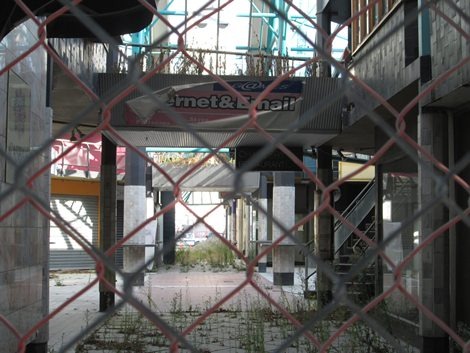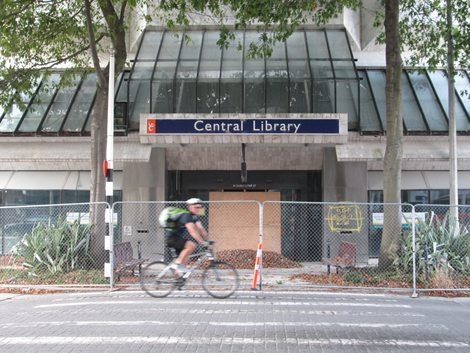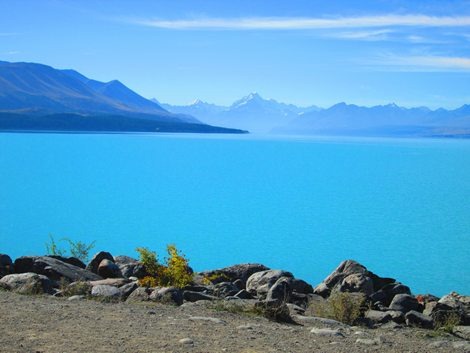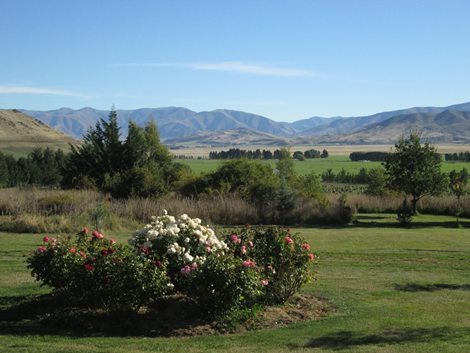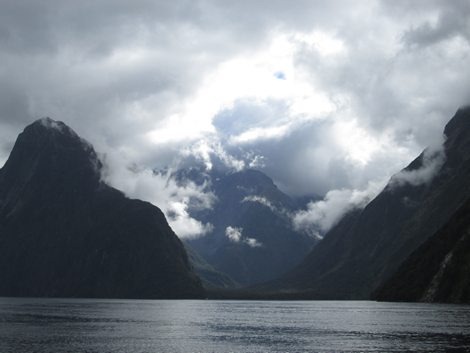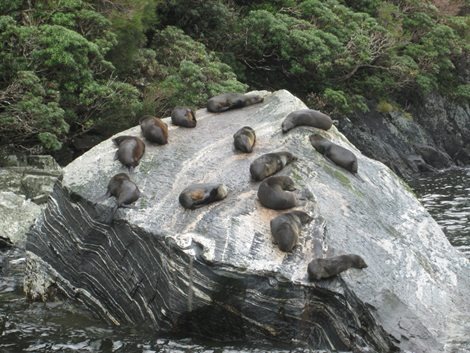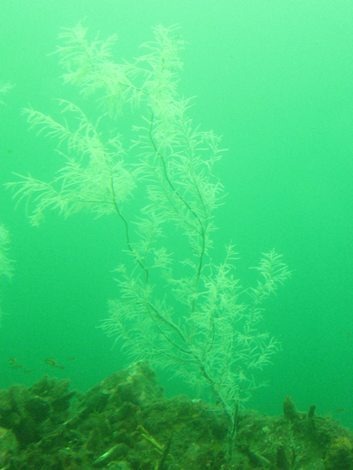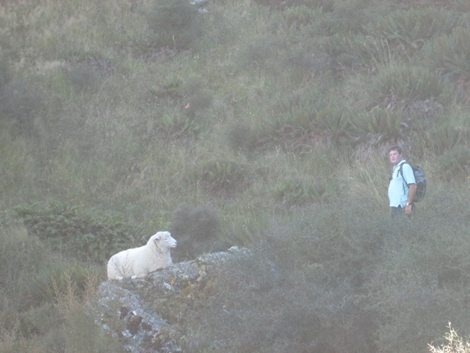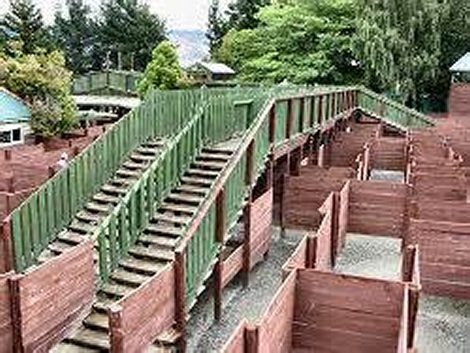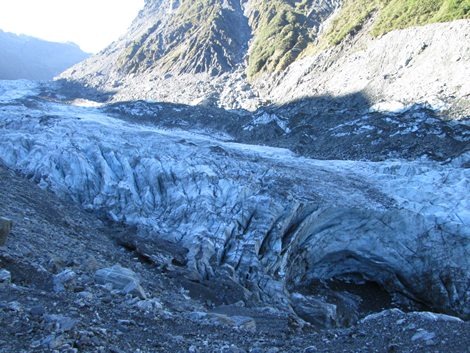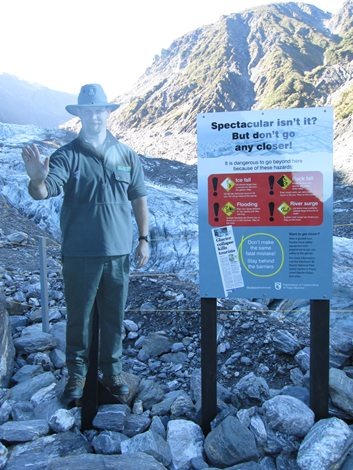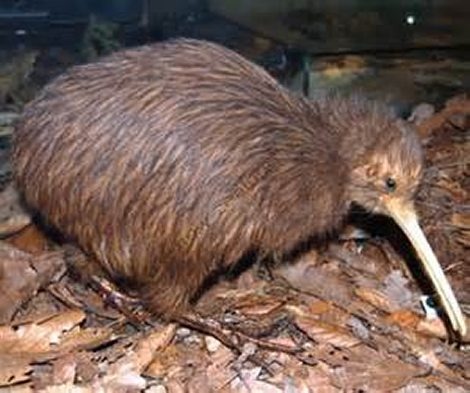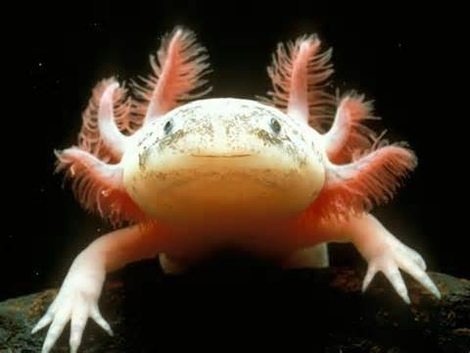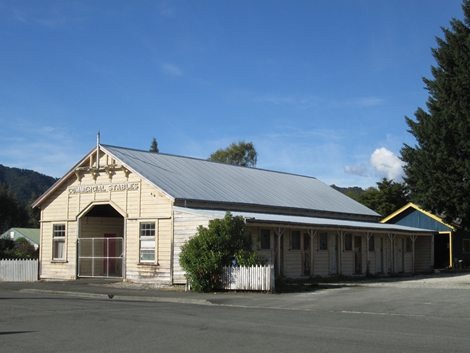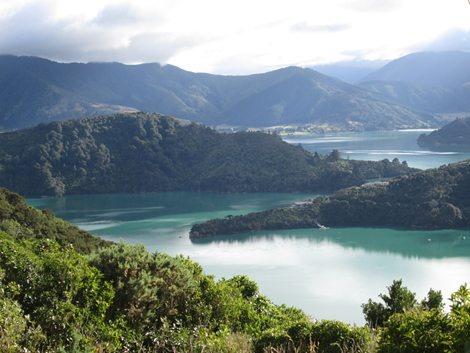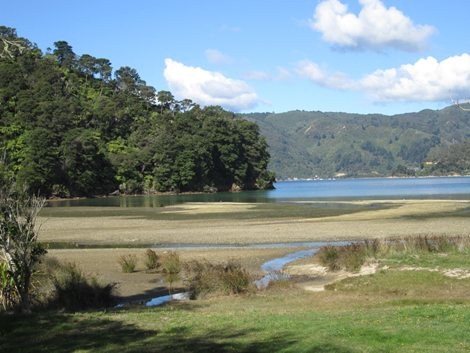Cook's Strait and Cook's Tour Part Two

|
Saturday 17th May – South Island 27th March saw us boarding the ferry at Wellington for the 3 hours or so trip to Picton in the South Island. It was rather like a scene from a black and white silent film where a wacky car ends up driving along a railway line – the ferry was originally built to take trains and the route to board takes you just that way – along the railway. Cook Strait, which separates North and South Islands has a reputation for roughness and the in flight magazine wasn’t too reassuring re-capping on unpleasant experiences that had happened to various ferries over the past 50 years. It was a good F5 (although at stages the sea state was much more that of a F7 – all to do with the shape of the sea bottom and the squeezing of the sea through a narrow gap) but for once we didn’t have to worry about putting in reefs or making sure our bits and pieces weren’t being thrown around down below. Nearly half the passage is made in the Marlborough Sounds which are stunningly beautiful. Not great sailing waters however – too many wind shadows caused by the headlands. Carol was particularly keen to visit Christchurch as she had worked in Dorset’s Christchurch for over twenty years. The city has suffered two earthquakes in recent years and the centre was particularly badly hit. A large area has been razed to the ground and progress in rebuilding is painfully slow. Insurance claims are taking a very long time to resolve and some people are living in very unpleasant conditions. A temporary cathedral has been built but no decision has been made as to the fate of the badly damaged original building. Many want it completely restored – a very expensive and lengthy option as the building will have to be reinforced to withstand future seismic activity. A cheaper, modern design combining traditional and Maori influences has bizarrely been criticised by architects worldwide. Normally, it’s the general public (and Prince Charles) who are vociferous in their negativity for modern architecture.
The badly damaged Christchurch Cathedral
The proposed contemporary design for its replacement
A shopping mall fenced off and not touched for three years
Let’s hope there is a fines amnesty for those slow to return their books! Moving further south the landscape changes quite dramatically – we were heading into the foothills of the Southern Alps where great ranges of hills, similar to those seen in Scottish lowlands border vast river valley plains.
Lake Pukaki – yes it really was that blue – well almost! South of the delightfully named town of Twizel we stayed at Buscot Station, a large dairy and merino sheep farm of several thousand acres. Tony Gloag, of Scottish descent, was a tremendously informative host and we learnt much about farming in New Zealand, particularly the impact of withdrawal of subsidies overnight in 1983, the devastation that rabbits have caused and how many farms are being bought by the Chinese as their demand for milk products continues to increase.
The view from Buscot Station Continuing south we stopped for a short time in Queenstown, billed as the adventure adrenaline capital of New Zealand and it very much has the air of ski resort which, of course, it is during the winter. Summer sees every other shop advertising tandem parachute jumps, jet boat rides and bungy jumping. Jon had expressed interest in doing a bungy jump but when he’d worked out how much freefall he was going to get – about 3 seconds at about $60 a second – he decided he’d been there more or less (OK, attached to a parachute rather than a bit of massively over-engineered bungy) free-falling for much longer and practically for free in a previous life. So, we passed on that. Sadly, our next hostel, where we were booked in for three days, proved to be a bit of a dud. It had sounded idyllic – log cabins scattered over a hillside with a view of Lake Manapouri. That description ranks with several well worn estate agents’ descriptions of barely habitable properties. The reality was a shabby wooden hut with very basic cooking facilities and no fridge. The loos were 50 yards away down a steep unlit rocky slope and the expected view was obscured by overgrown shrubs at the front of the deck. But, it was from this base that we visited Milford Sound – one of the “must sees” on the NZ tourist trail. It was a long day driving there and back but definitely worth it. As we descended from the very small unlined Homer Tunnel, which can’t be much fun for claustrophobics, we came across signs saying we were crossing the Cleddau River. The first European, John Gronno, to settle in the sound (although, strictly speaking, it is a fjord) came from Newport, Pembrokeshire and he named the place Milford Haven after his home port through which the Cleddau flows. We took a boat trip along the sound where numerous sealions slumber on rocks where the winds can keep the pesky sandflies of them. A school of dolphins joined us for a bit. The drought was beginning to break but we were lucky in that the rain had stopped by the time went aboard. However, relatively few of the waterfalls were really in action in quite the way the guide books say. The guide explained that normally about 600mm of rain falls in a month but that last February a new record low of 140mm was set. You just can’t have it all.
Majestic Milford Sound
Sealions having a good sleep We also visited an underwater observatory where one could see fish and other creatures that normally live at much greater depths. So much vegetation pours down the cliffs that the top layer of water is very dark which fools the aquatic life into thinking they are much deeper down. One of the most impressive sights was black coral which is actually white but until relatively recently only dead specimens, which are black, had been seen washed up on the shores.
Misnamed black coral Having gone as almost as far south as one can go, it was time to head north again. Our next stop was on the edge of Lake Wanaka – an absolutely stunning place on the eastern side of the Southern Alps. The town is a much lower key version of Queenstown and it was here that we seriously stretched our legs and got good lungfulls of mountain air scrambling up Rocky Top overlooking the lake.
Jon seeking advice on route choice from a local
Looking over part of Lake Wanaka from Rocky Top We spent an entertaining afternoon in Puzzling World which is full of optical illusions, ingenious holograms, an eerie room full of following faces and a very challenging maze very cunningly made out of wooden walls. The aim was to visit all four towers in the corners - guess whose patience gave up after number three!
The Maze that partially defeated us The journey through the Alps to the west coast was spectacular even though it poured with very welcome rain nearly all day. We were heading for glacier country in one of the least populated regions of New Zealand. It was frontier country with much gold prospecting – a challenge in the quite harsh environment fronting the full force of the Tasman Sea. It certainly felt rather bleak where the Haast River meets the sea.
Haast Falls with clear evidence of recent landslides We chose to walk up to the face of Fox Glacier – you can get closer to it than its neighbour Franz Joseph glacier. Fox is one of the view glaciers in the world which is still advancing – at the rate of about a metre a week.
Fox Glacier grinding its way down the valley A few years ago a couple of Australians were killed after they climbed over the safety fences and triggered a land slide, so now the Department of Conservation are really attempting to get the safety message across whilst saving on rangers’ salaries:
Cardboard Ranger! We were both keen to see a Kiwi of the avian variety and felt that we would be very lucky to do so in the wild so we spent a few hours in a wildlife centre in the middle of Hokitika. For those of you who don’t know, and we didn’t, kiwis are about the size of a largish chicken and scuttle around somewhat comically. Inside the building the natural habitat of the kiwi has been recreated but with day and night reversed by artificial lighting to accommodate the fact that the birds are nocturnal and punters want to visit by day. One of the birds, a female, was in a bad mood according the keeper as the roof next door was being repaired after it had blown off the day before and the noise was a great irritation to her! (The male of this species was tempted to comment but has decided not to – Ed). The centre had amassed a collection of quite unusual fishes and reptiles – in particular the axolotls were very bizarre in appearance. Also known as salamanders, they have the ability to re-grow a damaged limb and are of great interest to medical researchers.
Kiwi in its artificial environment – but seemingly quite happy
An Amazing Axolotl Travelling north and turning inland along the course of the Buller River took us to Murchison - one of the country’s renowned white water rafting centres. Sadly, as it was getting late in the season, there weren’t too many punters around and the necessary minimum number never materialised to allow us to do that. Instead we went kayaking. There are plenty of rapids to negotiate on the Buller River. Carol had not done this before so went with the guide whilst Jon was left to paddle on his own. It wasn’t, perhaps, as exciting as rafting might have been but you are very much more in the driving seat and it was a very enjoyable experience, albeit a pretty chilly one by the end of the afternoon. In Murchison, we came across the disused Commercial Stables. These would have been in use as a means of enabling long distance horse-borne travel well into the last century. The horses were kept inside and the riders or grooms slept in the bunk rooms facing outwards. The building has a preservation order on it but, sadly, there isn’t any money to repair it. It would make a great hostel!
Commercial Stables, Murchison Our final stop in the south island was Anakiwa in the Marlborough Sounds. We’d heard a lot about Queen Charlotte’s Track (think George III) and whilst we weren’t up for walking all 70 kilometres of it we did tackle the last section of 24 kilometres or so. We were staying in the hostel right at the end of the track and Shayne, the owner, took us by boat to our starting point at Portage. From there it was a very steep climb from sea level to 450 m for about an hour before the track started undulating rather more gently, thank goodness. The views were tremendous and worth the aching legs and lungs. It was a good way to finish off our time in the South Island. As with the North Island, we’ve only just skimmed the surface of the list of marvellous places to visit – we’ll have to come back.
The view from Queen Charlotte’s Track overlooking Marlborough Sounds
Davies Bay on the QCT – one of the flatter sections!
On the evening of 12th April, having attended a “Farewell to Yotties” party organised by the Whangarei Marine Promotions board, which included some wonderful singing by very happy local Maori singers, we re-joined Arnamentia in Marsden Cove marina. The plan was to move up to the town centre, do a few jobs that needed doing, re-provision and head for Fiji. The few jobs turned out to be rather greater in number and magnitude than we had anticipated but that is another story for another time. |
